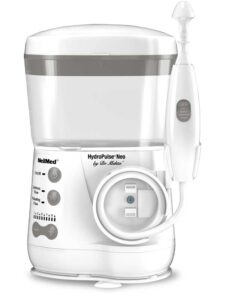Colorado Fires. How to Stay Healthy
Colorado Fires. How to Stay Healthy
What is the health effect of the giant fires that are consuming thousands of acres? The news media report loss of forest, homes and farms, but the damage to health can be significant. Persons with sinus, asthma or chronic respiratory problems are particularly subject to ill effects.
Because of the dramatic changes in world climate we are seeing fires larger than previously recorded.
With our current changing climate, we are getting more major fires that involve residential areas. It is important to know how these affect the respiratory system. With these fires, there is a combination of combustion chemicals such as CO2 and burn particles. You see the soot on your skin; unfortunately you are inhaling those same particles unless you are properly masked. The following recommendations will help.
The effects of large fires include cough, phlegm, rhinorrhea, sore and dry throat, sinus congestion, wheezing, eye irritation, and bronchitis.
What happens is that the smoke products affect the nasal and bronchial cilia in your respiratory system. Normally your nasal system has millions of tiny oars called cilia that beat in synchrony to move bacteria away so they don’t enter the body. When they slow down or even stop, then soot, ash and bacteria remain in place. In a sense, the soot that collects on your skin, similarly collects in you nasal and chest airways. A bit of soap and water will cleanse the skin; cleaning the nose is more difficult.
Most important factor is adequate liquids. You should drink until your urine turns light. Tea with lemon and honey is best because the tea contains elements that speed nasal cilia. The lemon and honey act to thin thick mucus that accumulates in nose and chest.
You want to get those cilia moving again so humming at a low tone, for example, “oooommmm” will vibrate the nose and chest and get those cilia to vibrate and pulse.
Saline irrigation helps remove soot particles from the nose. Best is to use pulsatile irrigation that pulses at a rate to restore the nasal cilia.
Note that the smoke is acidic and this can be quite irritating. Usually on performing pulsatile irrigation, for example, we add one teaspoon of salt to 500 cc of warm water in the Hydro Pulse™ Nasal/Sinus Irrigator basin to make an isotonic saline solution. But it is best to reduce that acidity, so I recommend one teaspoon of salt and ½ teaspoon of baking soda (soda bicarbonate) to the Hydro Pulse™ basin in order to counter the smoke’s acidity. If you are using Breathe.ease XL Enhanced saline prparation, that is at the best ratio of acid/base balance.
If the smoke exposure is heavy, irrigate twice daily.
Masks and filters:
Effective masks are technically called filters. Though they look like paper masks, that are designed to filter out 95% of particles that are 0.3 microns or larger. They are generally marked N95. The big problem is that they must be fitted properly, there must be a good seal. Then most person find that they make breathing uncomfortable.
It is important to know that the ordinary dust masks for house cleaning do not provide adequate filtration.
Persons with asthma or COPD will be more severely affected and should avoid the smoke if possible.
Even when the fires have stopped, there will be a long period of smoke/dust blowing about. You need masking then too.
These simple steps can help avoid the sinus and chest complications that may follow smoke inhalation.

